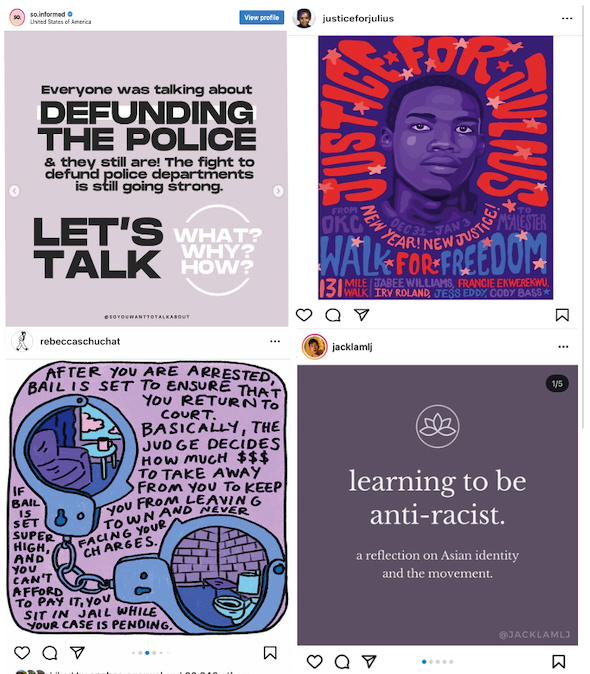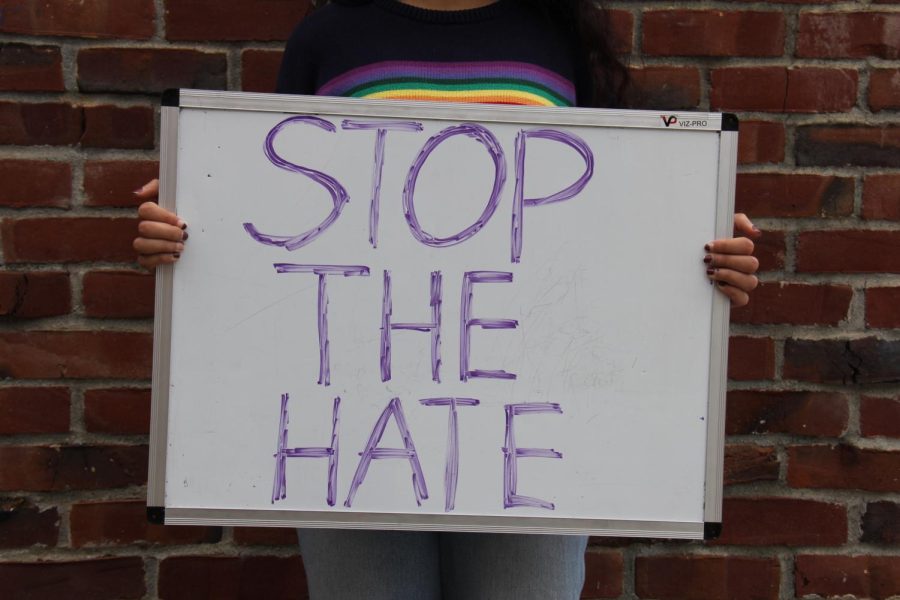Wait For it
Why we can’t expect immediate change in social justice movements
A student hold up a sign reading “Stop the Hate” to represent to rise of social justice movements, protesting, and social media in the past few years.
April 30, 2022
For many MVHS students, it is not uncommon to open up social media pages and see yet another infographic amongst our feed of celebrities and influences,
After the resurgence of the Black Lives Matter movement in the summer of 2020 following the murder of George Floyd, infographics quickly became a source of information. With aesthetically pleasing fonts, graphics and lists of “do’s and don’ts” and “pros and cons,” it was easy to briefly swipe through such posts and feel accomplished about educating ourselves on the topic.
Movements such as #MeToo, LGBTQ+ rights, mental health and more once used to be strictly taboo, but have since become a casual part of our conversations with the hopes of bringing about positive change. At the same time, however, these discussions are often condemned for being boiled down to tiny, pretty graphics for social media users to simply view, maybe share and scroll past, without actually doing anything tangible to support the movements.
However, this condemnation may not be completely justified. Of course, social media should not be the main source of our news, and taking the time to seek information from unbiased, credible news sources is the ultimate goal. However, implementing these practices into one’s daily lives is not achievable for many people, especially busy high school students.
But it’s the little changes, such as implementation of news snippets into our social media feeds, that initiate larger change. If we don’t start with something as simple as infographics on social media, how can we ever expect to see changes in laws and regulations?
Looking back at the years before the pandemic, the usage of the n-word was rampant at MVHS, specifically among upperclassmen. Whether used in casual conversation or when singing along to a song, the word was used so commonly between upperclassmen that underclassmen began to repeat it blindly, forming a ripple effect. However, since the increase in support for the BLM movement in 2020, usage of the n-word and other forms of racism have vastly declined, as most students have either been educated by others or taken the time to educate themselves over the past few years.
However, the issue is still prevalent in our community, given the recent vandalism in the boys B building bathroom. There is no doubt that our school must continue to work on such cases of discrimination; however, we cannot disregard the fact MVHS is making slow, but effective, steps to combatting these issues.

While MVHS students often groan at the thought of another tutorial period being taken up by an Advisory lesson, it is strides like the work of our faculty and fellow student leaders who have put effort into teaching the very issues we robotically repost on social media that ingrain these anti-discriminatory ideals into our heads, and subconsciously make us question the funniness of a sexist “joke” or normalization of a homophobic comment.
The truth is, much of the work that goes into social justice movements isn’t marching frontline at protests or giving speeches at City Hall, actions that prioritize immediate societal change before the first step that is required, a mindset change on an individual level. Although being able to go from zero to 100 to stop abortion bans or make capital punishment illegal would be ideal, it’s not entirely realistic. In fact, it’s the “boring” busy work such as making slideshows and reading articles — and yes, scrolling through infographics — that ultimately works. The work isn’t glamorous, it isn’t “post-worthy,” but it is what it needs to be — change.
Gradualism is tiresome. Gradualism is understanding that change takes time and doesn’t happen at the snap of a finger. Gradualism is why our Instagram feeds may be a lot different now than they were in the summer of 2020, back to being filled with selfies and celebrities instead of pastel infographics.
But gradualism is also optimistic. If we had the “power” to implement visible change over one summer, whose effects we are still seeing today through increased awareness and education in our schools, it means we have even more power to do so now. So instead of being discouraged by setbacks, it’s up to us to make the extra effort to spark bits of change wherever we go.
Because at the end of the day, if we aren’t ready to fully pay attention to an Advisory lesson, respect the work of our Equity Task Force or participate in discussions on discrimination in our literature classes, we are slowing down the movement before it can even begin.


















